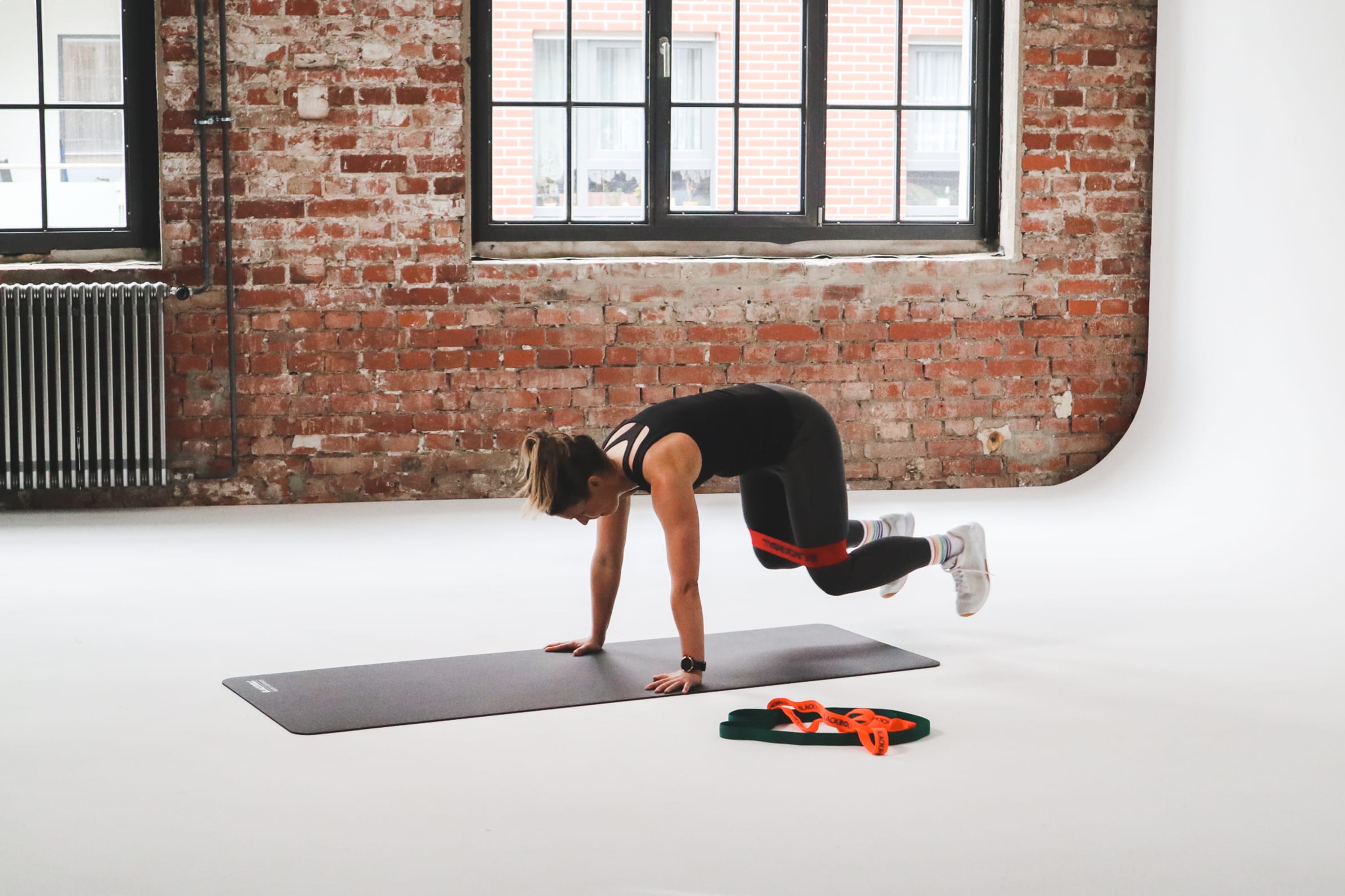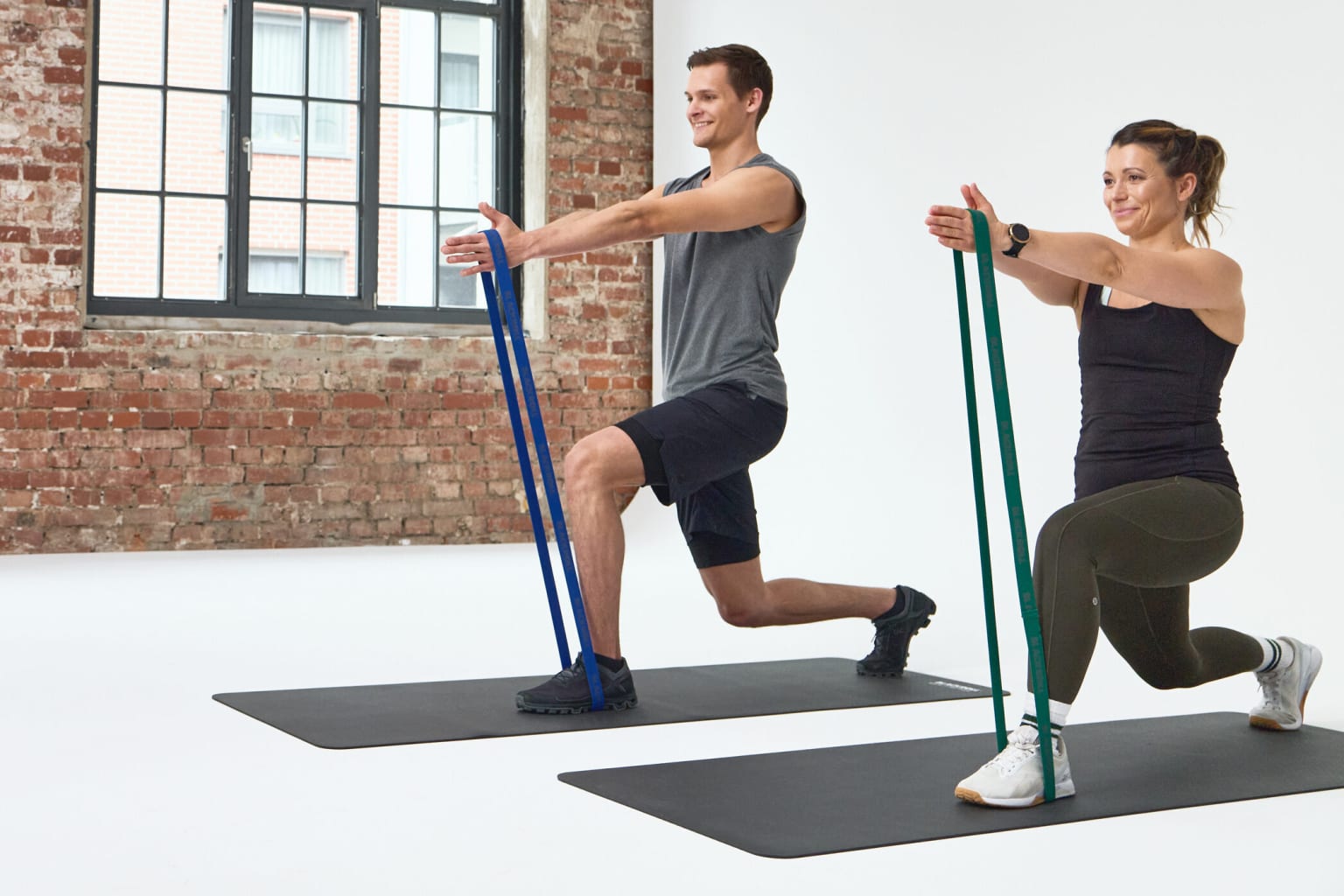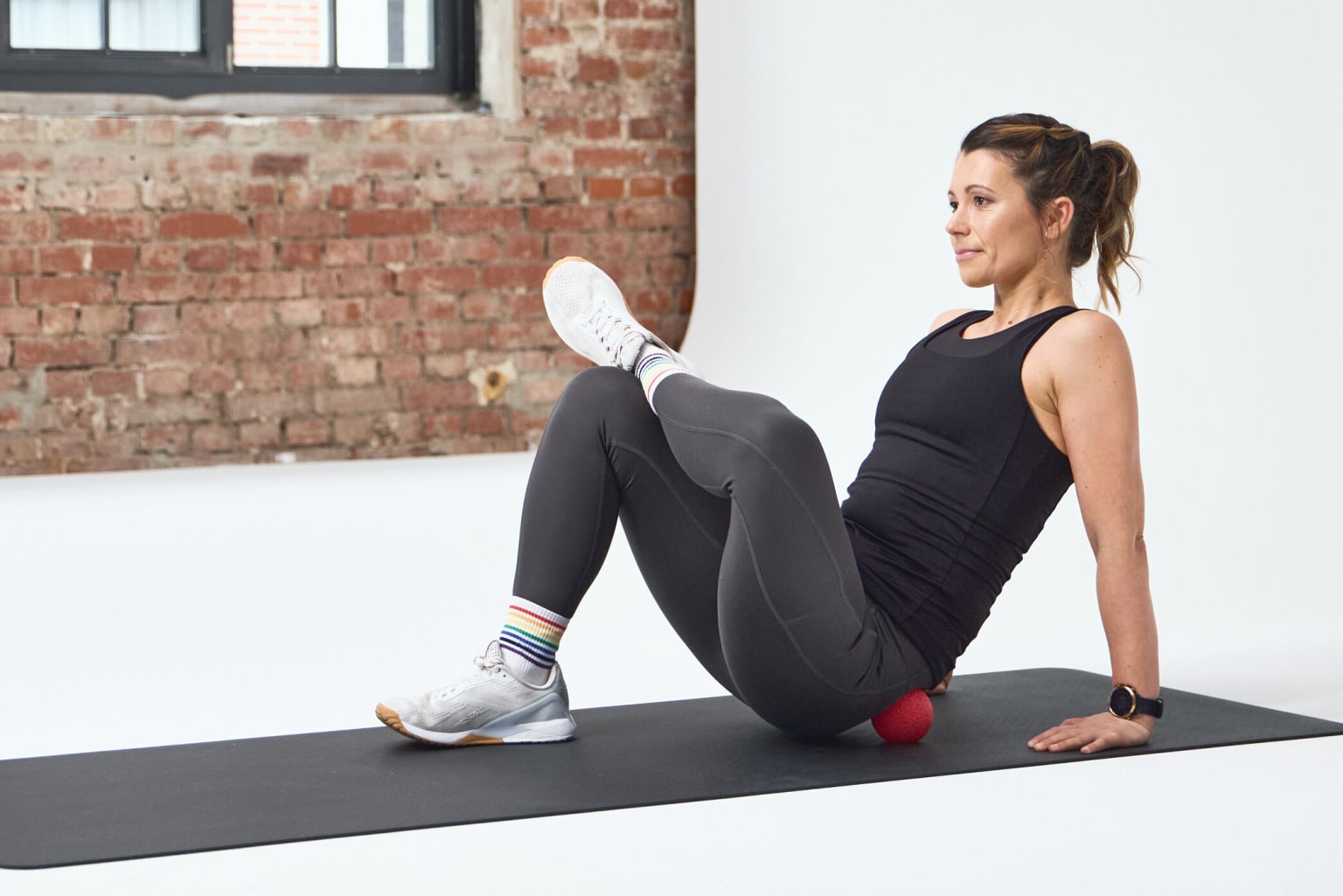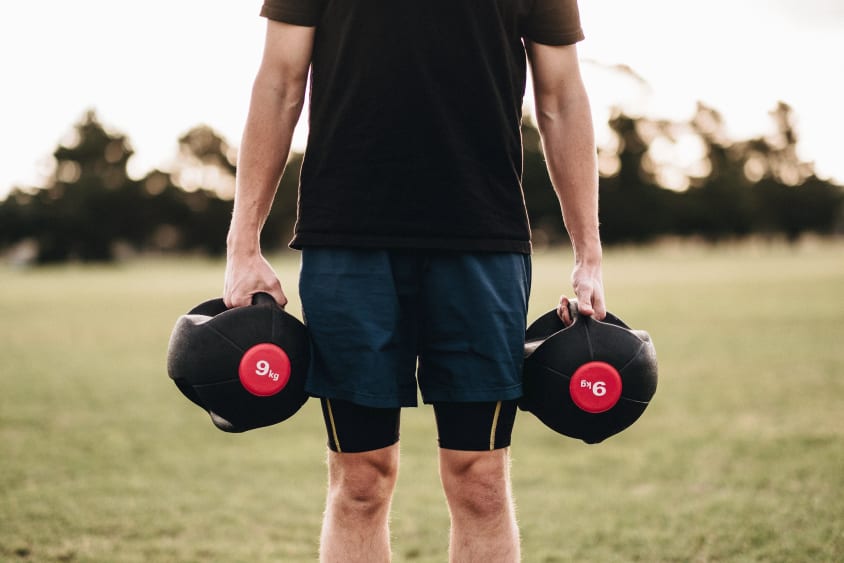
HIIT: Everything you need to know about the training method.

01. What is HIIT?
HIIT stands for High Intensity Interval Training. It's high intensity because your pulse will reach up to 85 - 100% of your maximum heart rate. It’s interval training because you only reach this high heart rate at specific intervals. You choose these intervals so that you spend longer working out than relaxing. One example is Tabata training, whereby you work out in 20-second intervals with 10 seconds’ rest. One round consists of 8 repetitions and a session takes four minutes. Music or a timer indicates the interval duration.
02. What does HIIT training achieve?
03. Tip for building muscle with HIIT
If you want to put in additional effort because you are using HIIT to build muscle and increase power, then you should use resistance bands. This increase muscle activity to at least 60% of your maximum power for real exertion. If you are already at an advanced level, training using simply your own body weight will no longer suffice to put the necessary strain on your tissue.
By using resistance bands during High Intensity Interval Training, you'll increase the intensity of exercises using your body weight. As a result, you'll increase the force that your body needs to work against. This encourages your muscles to grow. You will only see visible muscle growth by regularly increasing resistance and pushing your body to new levels. Resistance band training combined with HIIT offers a real alternative to strength training using equipment or free weights.
04. How often should you do an HIIT workout per week? For how long?
Multiple studies show that 40 to 60 minutes of HIIT two days a week are equally effective as five hours of Low Intensity Steady State Cardio Training per week. This includes sports such as jogging or cycling. However, this only works if you train 20 to 30 minutes per training day and recover well in between.
If you are a beginner, you should perform simple HIIT exercises such as jumping jacks or fast running on the spot. More complex exercises, such as burpees, not only require a greater degree of coordination but also correct technique. If the exercise is performed poorly, the HIIT workout will do you more harm than good. For more advanced exercises, you should at least have a basic understanding of core stability and its requirements. If the typical exercise intervals are too long for you initially, you can reduce the time to 10 or 15 seconds instead and increase your recovery time to 20 or 30 seconds.
05. Recovery after High Intensity Interval Training
High intensity requires sufficient recovery. Unfortunately, recovery is often only minimally featured, if at all, on training plans. This can lead to issues such as overloading and result in poorer performance. HIIT places a high degree of stress on your body as it emits stress hormones such as cortisol during the workout. Many metabolic products are also produced from the muscle workout. That’s why it is extremely important to recover after intensive workouts. Allow two to three days of rest between HIIT sessions. Your body will repair any damaged fibres and garner energy for your next HIIT workout. Fascia rolls support active recovery and prevent muscle cramp.
06. HIIT or jogging?
In contrast to HIIT, you can also do Low Intensity Steady State Cardio Training. Steady State means a continuous form of aerobic activity in which you exert a steady level of energy such as lactate concentration in the blood, oxygen intake or heart rate for an extended period of time. Your degree of exertion remains at a sustained level throughout. You can determine this level by a specific heart rate range, such as 65 to 75% of your maximum heart rate. If you don’t want to determine this using a heart rate test, you can use a general rule of thumb to calculate your maximum heart rate. Subtract your age from 220. Example: You are 27, so you'll calculate 220 - 27 = maximum heart rate 193.
It always depends on your goals and what's personally important to you. The silver bullet here is a combination of the two which keeps you fit, strong and able to perform. If you continue to train at the same level, this will count towards your basic endurance levels. You'll benefit your cardiovascular system without overloading it. Of course, many healthy or older people benefit from this workout method. This method of training also works well in terms of recovery if a gentle workout is required. However, if you are ready to regularly push your own limits, HIIT provides safe and positive results for your body.




